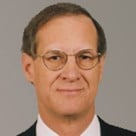Securitization Was As Much To Blame As AnythingI created the first hotel CMBS programs in March, 1993 so I have a lot of first hand understanding of what happened. Low interest rates and high mortgages were not the cause, just the manifestation of the crisis. While many things and people all came together to create the crisis, the underlying thing that made it all come together was securitization. If there is no wide availability of capital to loan, then low rates alone cannot have a major impact. Housing and the irresponsible lending could not have happened if there had not been the excessive lending capacity made possible by securitization. While there was gross ethics failure by Barney Frank covering up for Raines producing phony financials, and pushing subprime lending by Fannie, it was the ability to securitize any mortgage with no real underwriting which really blew the top off the subprime lending market. Wall St enabled the crooked mortgage brokers who were encouraged to make any loan, and to produce even more volume to fill the securitized pools. If it were not for securitization, the warehouse lines would not have been available to the mortgage brokers to make the bad loans. This then flowed over to commercial mortgages where filling the securitized pool became the only goal, not underwriting quality, which was thrown out entirely near the end. If I can sell it, I will loan it, became the mantra.Subprime lending was not new. It had been around forever. Except that it was done by very experienced small lenders who knew how to judge the risk of a cab driver or waiter who earned money off the books. Risk was carefully controlled and volume was relatively low. It was only when securitization arrived to provide the fuel, along with Barney Frank pushing home ownership for all, and the CRA rules against redlining, that subprime got out of control. It was easy then for Wall St and mortgage brokers to move on to over lending to everyone in order to fill the pools with more and more loans. All it took was someone falsely claiming that house prices never went down in the US, and the party was on.When we created the original securitized programs in 1993, the underwriting was very tight, there were only a few tranches, there were no CDO, SIV's, no mezz, and no CDO indexes or other esoteric derivatives dreamed up by a bunch of quant kids who had never developed so much as a bird house, but who were allowed to create models of how real estate risk was to be assigned and priced. They had zero understanding of real estate, and they became enamored with their computer algorithms. The truth is, nobody can really slice and dice a mortgage or piece of real estate in so many tranches and have any real understanding of the relative risk and pricing of the risk with any degree of reality.In November, 1993, two of us had a discussion of how we had just created the next S&L crisis except it was going to be far worse. We knew then that Wall St would not be able to resist the temptation to take securitization to ever riskier levels and volumes, and eventually the whole thing would collapse. The outcome was very predictable for those of us who had been around the Street for a long time. We also knew then, that the servicing protocol would never work in a crisis.The crisis was the fault of everyone-the regulators, politicians, Wall St bankers, crooked mortgage brokers, irresponsible borrowers and the media insisting that everyone should own a home, or that commercial real estate prices were in a new paradigm of cap rate compression. Had it not been for securitization to provide the fuel, the disaster would have been far more contained.
© Touchpoint Markets, All Rights Reserved. Request academic re-use from www.copyright.com. All other uses, submit a request to [email protected]. For more inforrmation visit Asset & Logo Licensing.







